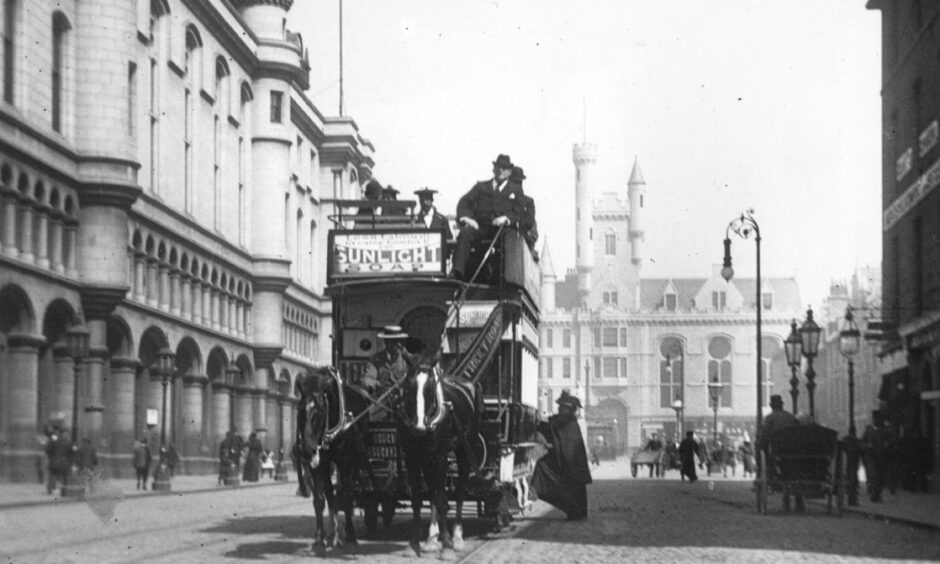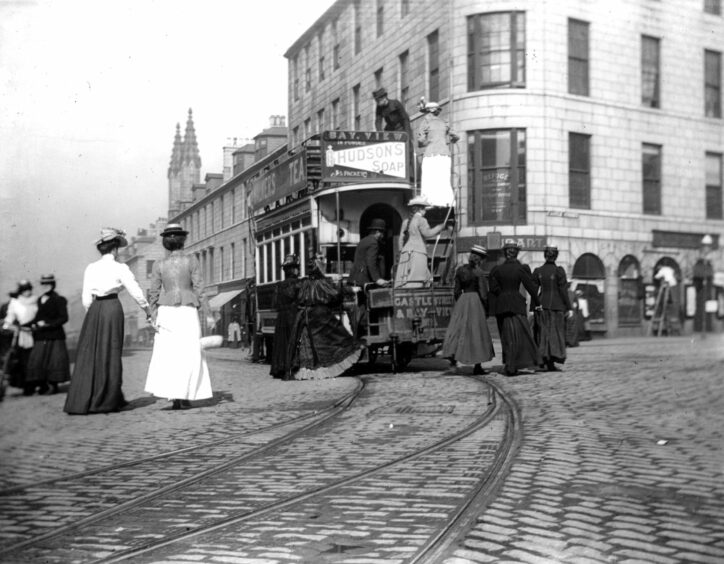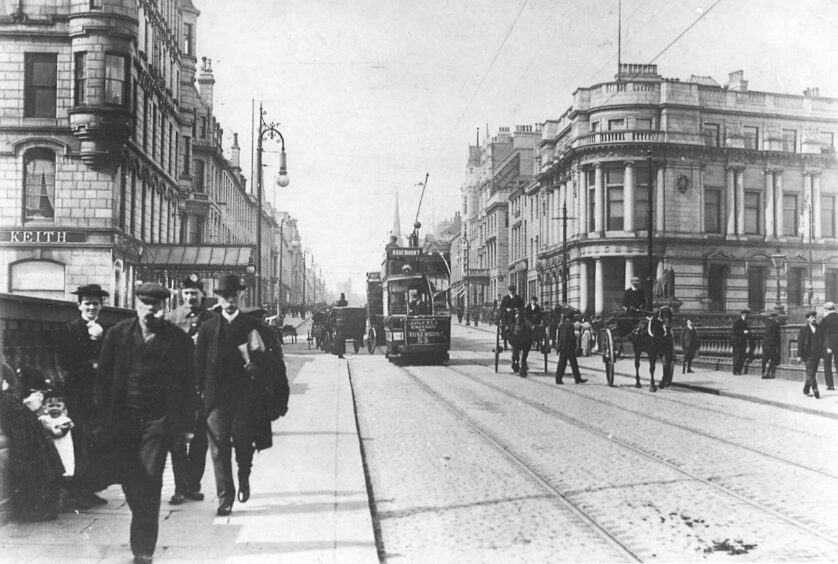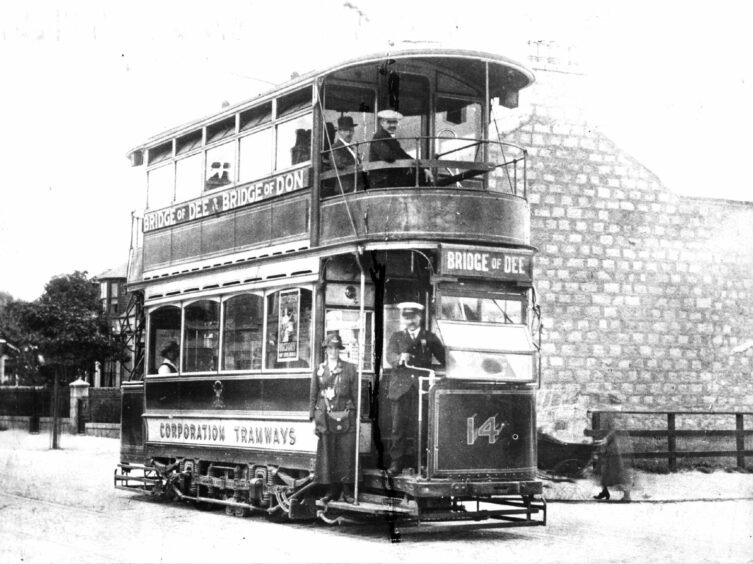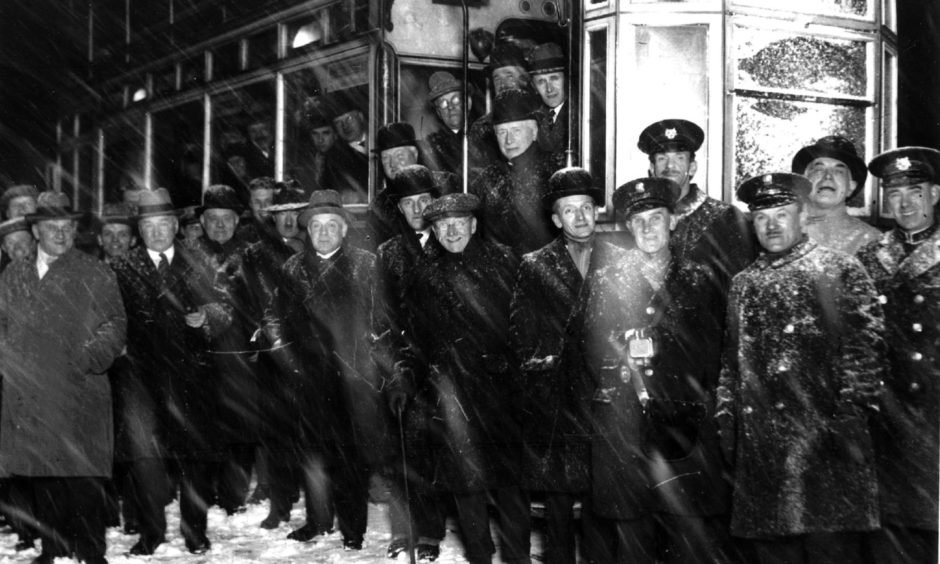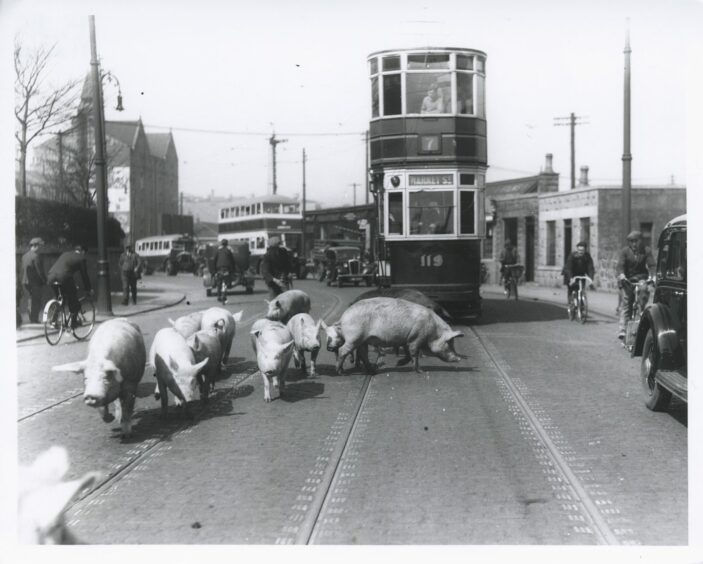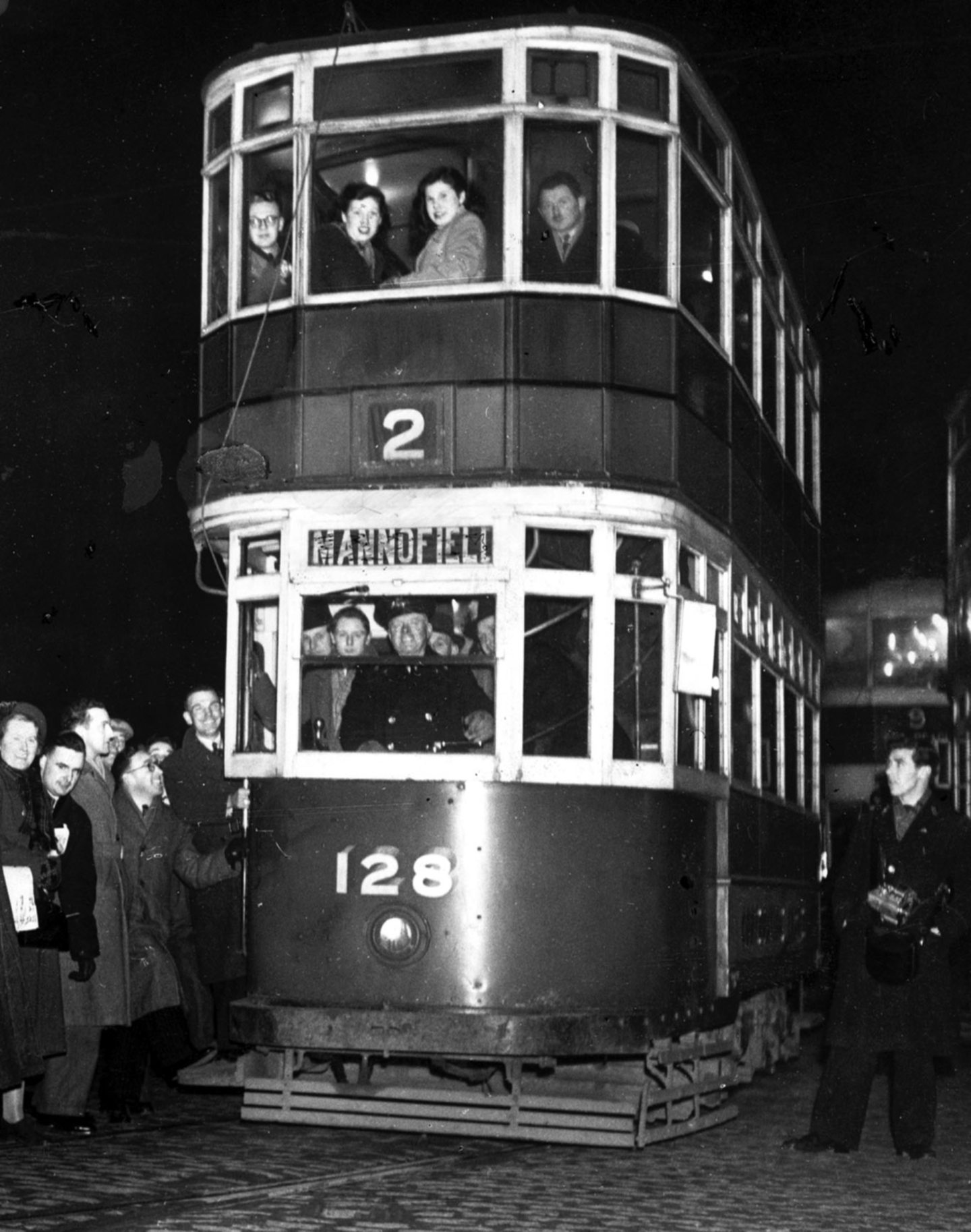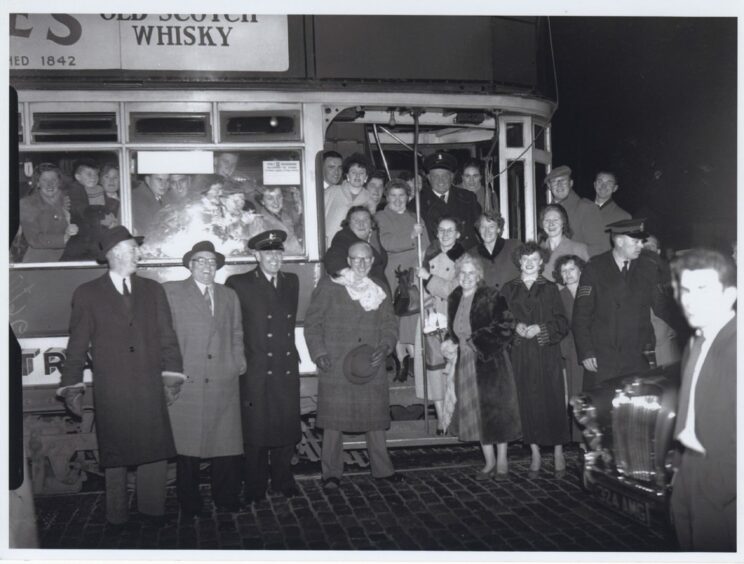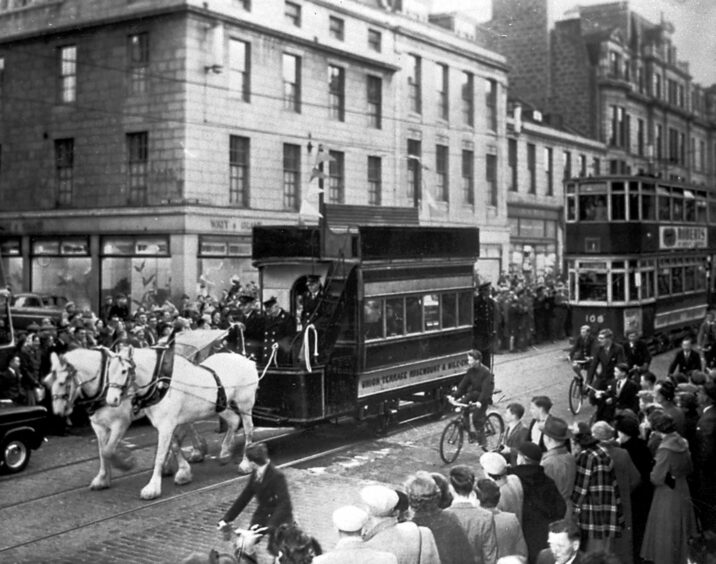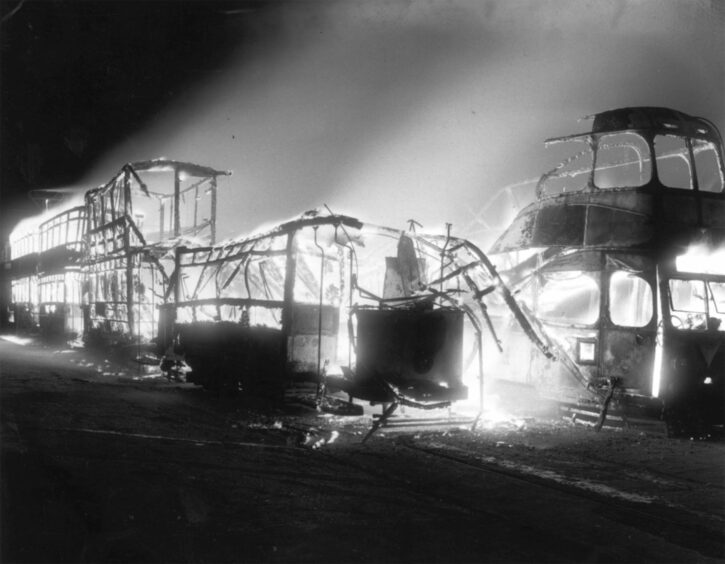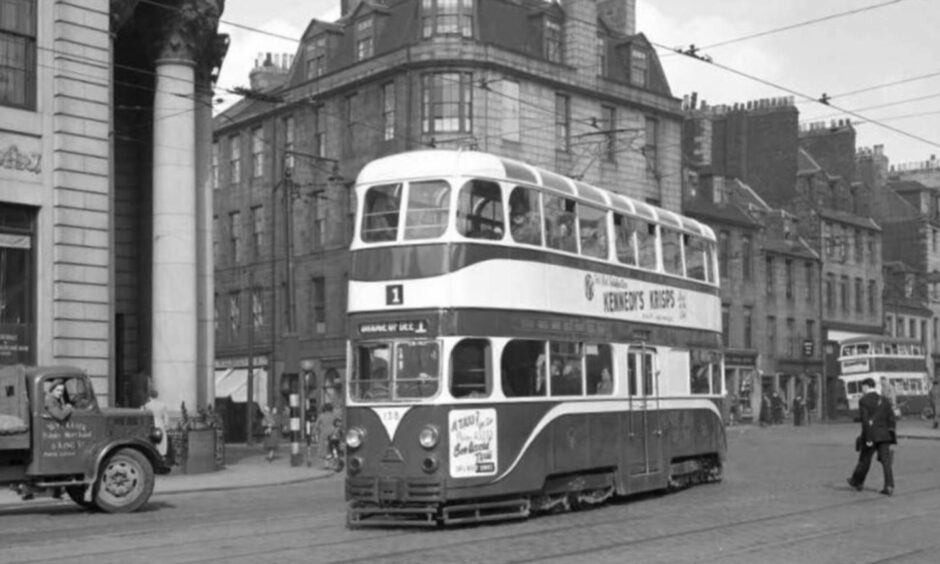
Trams ruled the roads and kept Aberdeen running for almost eight decades, after being approved 150 years ago in 1872.
A labour and iron shortage meant work couldn’t begin until April 1874.
It took just four months from the breaking of the ground to the opening of the network on August 31 1874 to construct Aberdeen’s horse-drawn tramway.
The total length of the line operated by Aberdeen District Tramways Company (ADTC) was three miles for running six tramcars, pulled by a fleet of 24 horses.
The first route took passengers from Queen’s Cross, where the tram depot was, to Kittybrewster via Union Street and St Nicholas Street.
The second took them from Queen’s Cross to the North Church on King Street via Union Street and Castle Street.
The trams ran every 15 minutes from 8am to 10pm, and, at a cost of just £18,000 for the whole network, the tramway was considered a financial triumph.
Lines were later added in Rosemount, Bridge of Dee, Mannofield, Bay View and Bridge of Don.
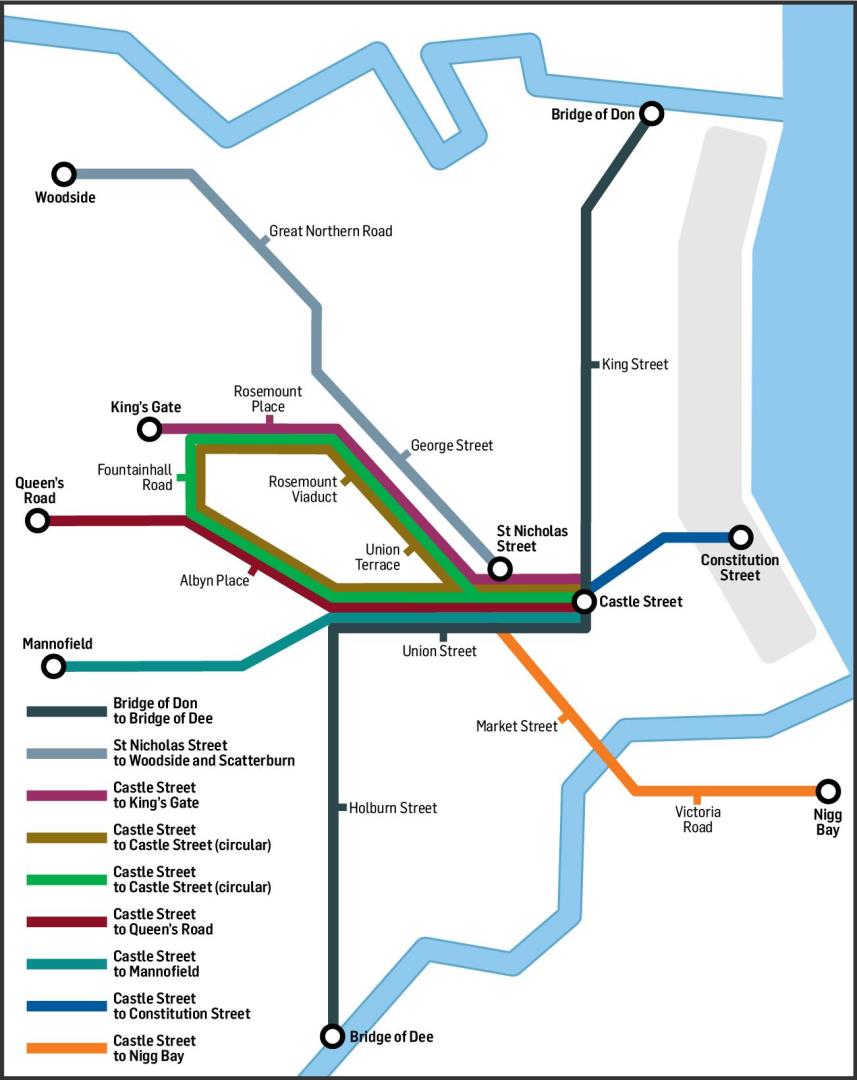
On August 26 1898, the company was bought over by the city and the first electric trams arrived at the turn of the century on the Woodside line.
The remaining horse-drawn lines were converted over the next two years.
New lines were opened to the beach, Ferryhill and Torry.
The trams used to be packed to the gunnels.
Revenue between 1899 and 1904 trebled and passenger numbers rose from four million to 15.5 million.
The Aberdeen Suburban Tramways Company began running trams in 1904.
A fleet of six cars, painted red with cream panelling, operated a 12-minute service from Mannofield to Bieldside and Woodside to Bankhead.
It later used the Aberdeen Corporation lines at Castle Street and Market Street.
The trams had a pay-as-you-enter fare collection system which ran from April 1913 until it was abandoned in 1915 because of the boarding delays.
Aberdeen Corporation Tramways was left with too few conductors as more and more men were called up for military service in the First World War.
Industry relied on people being able to travel, and cuts in tram services posed serious problems and Aberdeen began recruiting women to work as conductors.
By the end of the war nearly all the conductors in Aberdeen – and a handful of drivers – were female.
Buses began to appear on the Granite City’s streets in 1920s and by the end of the decade the competition forced Aberdeen suburban lines to close.
The loss-making Torry route closed in 1931.
The fall of the Torry line was much like the first domino falling for Aberdeen’s trams.
The Ferryhill link vanished later that year for similar reasons.
The bus fleet almost doubled from 77 to 149 between 1945 and 1950.
By then, however, the network of tramlines had been outgrown by the developing city.
But then they vanished in quick succession.
It wasn’t a bolt from the blue, though.
Aberdeen had outgrown its trams.
The Mannofield route was closed in 1951, followed by Rosemount in 1954.
The Evening Express described the running of the last tram on the Rosemount route as a gala occasion with a “human avenue a mile-and-a-half long throwing Aberdeen traffic into disruption”.
Cars, buses and trams were brought to a standstill, forced to give way to the humble work-horse, “long ago squeezed from the everyday street scene”.
The report, under the headline “Horse-Drawn – like The First” said it was an event that would have passed uneventfully had it not been decided to mark the occasion by trotting out two heavy horses to pull the prototype of the trams then in use – an open-topped, wooden-seated car that was 70 years old.
“That led to a chain of events,” the EE account continued, “which led to one of the most fantastic scenes in the city’s history.”
Thousands of people thronged the route from Castle Street to Queen’s Cross depot and lined the actual rails for a close-up view.
Traffic, with drivers running the risk of knocking people down, was forced to stop and bottlenecks were created at every junction, with the scene being described as more reminiscent of a victory celebration.
The horses, Bill and Betsy, from the Northern Co-operative Society’s stables, were untroubled by the host of people crowding in on them and stuck gallantly to their task.
The steep incline from Rosemount Viaduct, however, was more than they could manage and when Betsy stumbled at the junction of South Mount Street and Baker Street, the horses were unhitched while an electric tram pushed the veteran tram to the top of the incline where Bill and Betsy again took over.
The normally 12-minute trip took exactly one hour.
The Woodside route went in 1955 and Woodend in 1956.
The Hazlehead and Beach tramways were closed in 1956.
The last Aberdeen tram came off the rails on May 3 1958.
The last hurrah was a short trip from Bridge of Dee to Bridge of Don where the streets were lined with local residents who had come to pay their last respects.
The city’s fleet was destroyed at the beach a few days later.
Their funeral pyre saw flames dance high into the darkness.
At that time no one wanted to buy second-hand trams, as cities across the UK shut down their tram systems.
The Aberdeen cars were valuable only as scrap, sold to a dealer in England.
In the final year of operation, tram passengers in Aberdeen totalled 11 million.
Buses accounted for 85.8 million passengers.
Could trams ever return?
Nostalgia about trams may have grown over the years, but it’s unlikely they will ever be seen anywhere now but the city’s transport museum.
The suggestion sparked much debate among the public, but officials believe Aberdeen is too small to make such a multi-million-pound project viable.
More like this:
How the last tram from Torry sparked the bonfire of Aberdeen’s entire fleet
Beyond the Beeching cuts: Would branch lines revival boost north east communities?
Rare surviving sign from Ballater Railway Station set to go under the hammer
